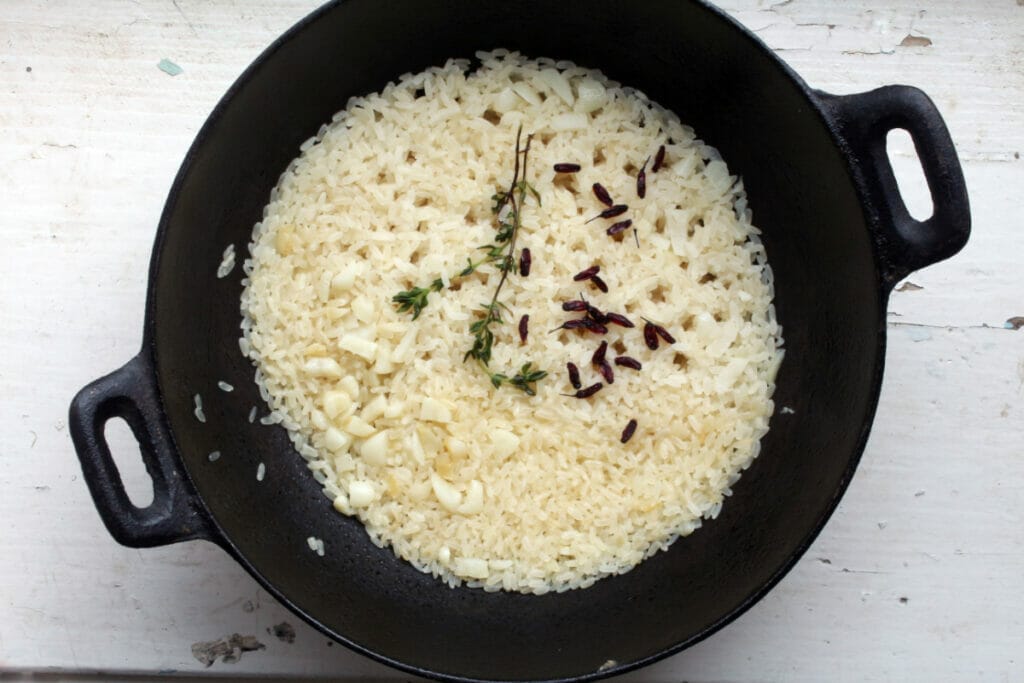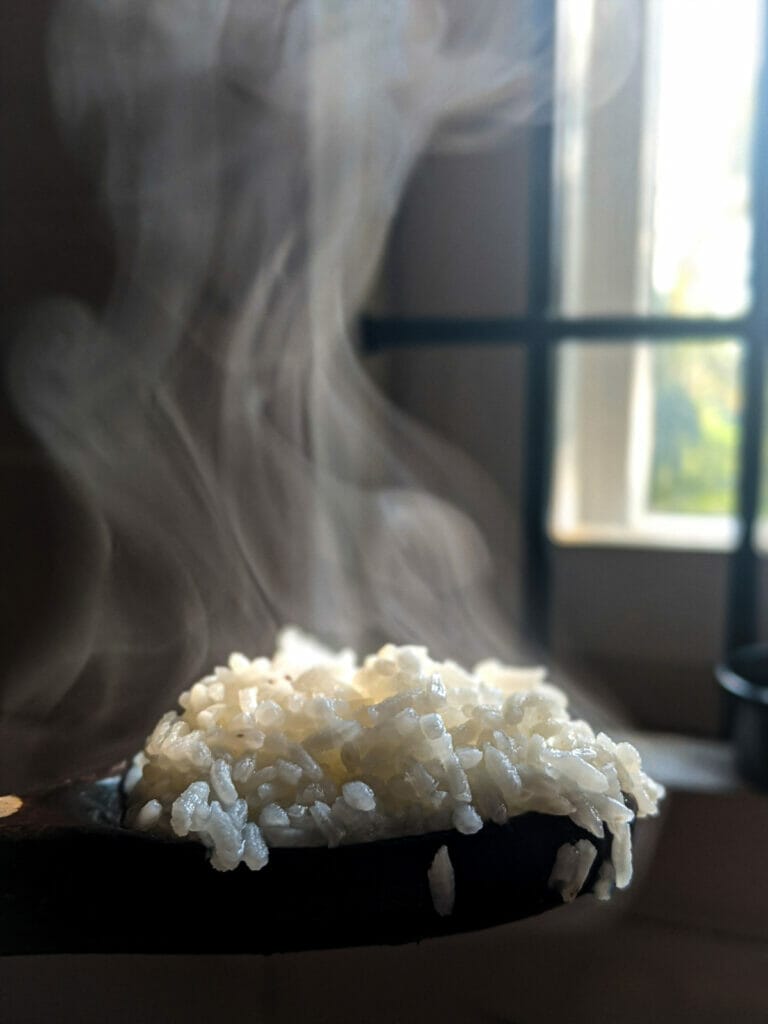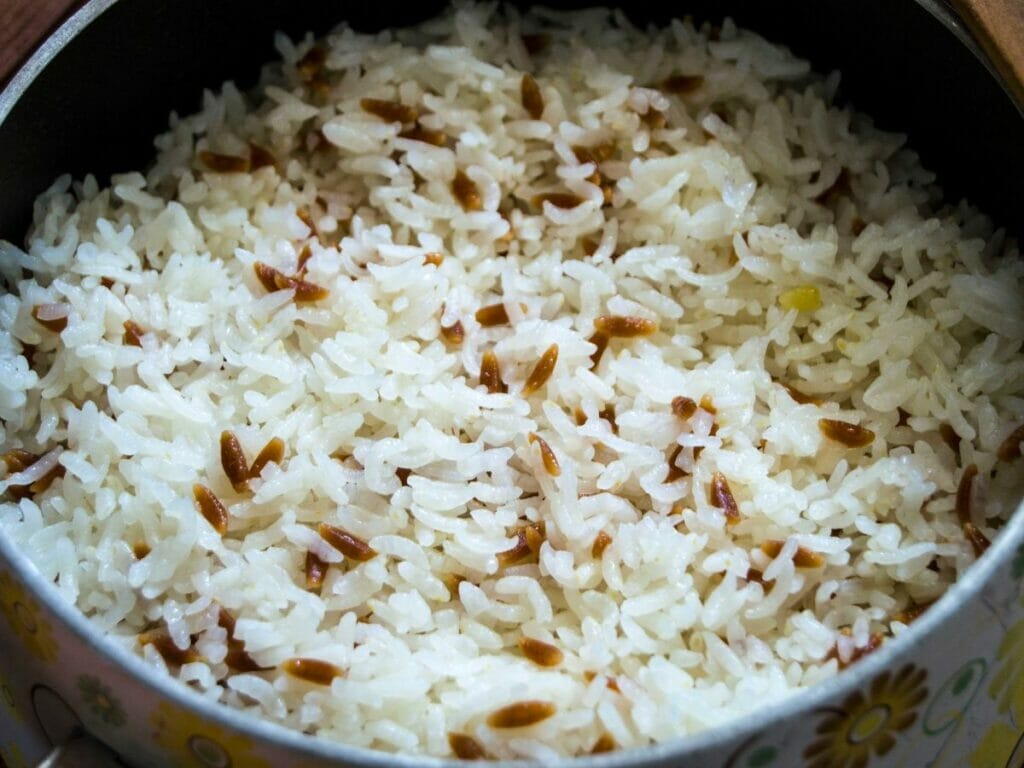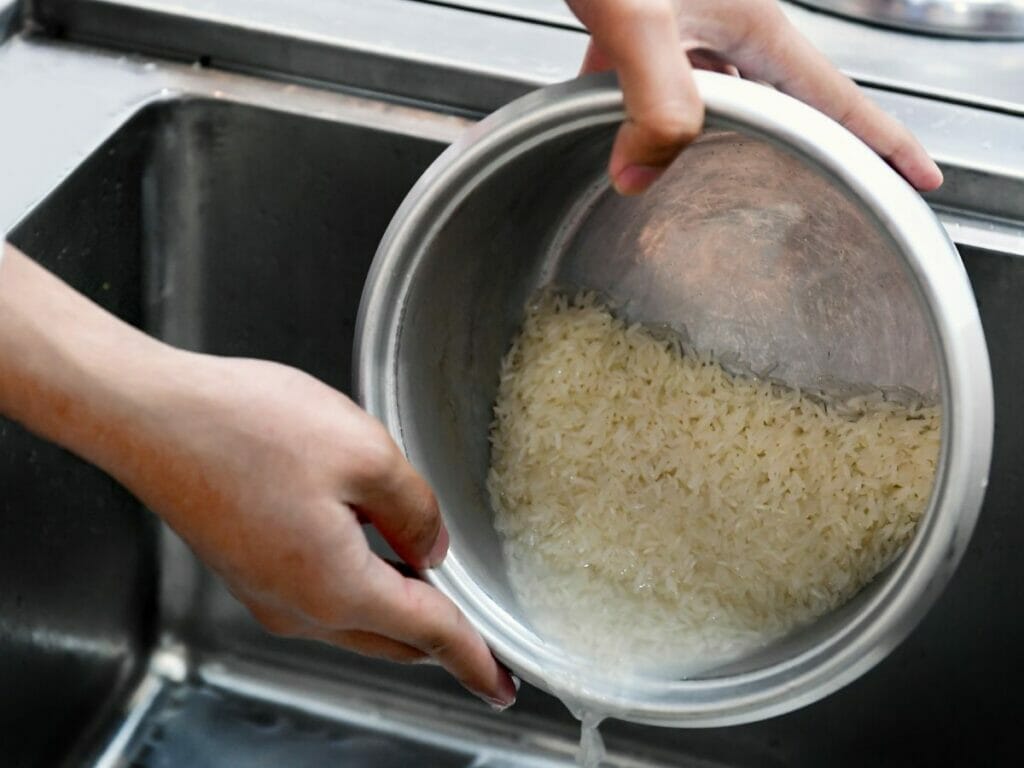As an Amazon Associate, I earn from qualifying purchases. In addition, I participate in several other affiliate programs that allow me to earn while I recommend products I love.
For such a simple grain, rice is surprisingly tricky to cook perfectly.
Well, at least for beginners or anyone who hasn’t grown up watching parents in the kitchen.
But don’t despair; it’s never too late to learn useful cooking tricks.
Knowing how to make rice not sticky or what to do with mushy rice is a culinary tip you’ll always appreciate learning!

Have you ever stared at the stovetop, wondering, “why is my rice mushy?”
Nothing is more frustrating than finishing a delicious meal and then realizing an essential component of your recipe didn’t cook properly.
Thankfully, there are a few different ways to fix mushy rice!
Our Favorite Quirky Kitchen Gadgets
- Select-A-Spice Auto-Measure Carousel – Get your exact spice amount without measuring spoons with this spice carousel. Simply twist the dial for a perfect 1/4 teaspoon measurement!
- Silicone Utensil Rest with Drip Pad – This utensil rest keeps my countertops neat & drip-free!
- Snap N Strain Pot Strainer and Pasta Strainer – I love this strainer because it fits on all pots and pans while also being compact and easy to use!
- Herb Scissors Set – I use these scissors to cut and mince fresh herbs directly into any dish without the tedious work of cutting each herb or dirtying up a cutting board.
- Knife Sharpener – I love how quirky and nifty this rhino shaped knife sharpener is. It definitely puts the FUN in functional!
Why Does Rice Go Mushy?
If you’re asking why is my rice sticky, the reason is simple.
Maybe you added too much water to the stove or overcooked it.
When rice is overcooked and absorbs excess water, the result is mushy rice.
This result happens because the excess water causes a mushy or soggy texture.

In addition, overcooking can cause the rice grains to split open, so you can imagine why it tastes so disappointing when it goes mushy.
Once the rice grains have absorbed too much water, they can taste starchy, gummy, or sticky, changing the consistency too much for the grains to absorb the moisture.
This consistency can ruin an entire meal. For example, suppose you’re adding rice to a liquid-based meal such as curry.
In that case, starchy watery rice can end up seeping into the whole meal and affecting all the flavors.
So when your rice goes mushy, it makes sense that you want to fix it.
How to Fix Mushy Rice if You’ve Already Cooked It
Let your rice rest
Make sure you wait for the rice to set for a few minutes before worrying that it’s ruined or too watery to eat, as sometimes the texture can change after the rice has cooled down.
Also, letting the rice sit allows some excess water to evaporate.
Once the water has evaporated as steam, there will be less water left in the rice.

Ensure you take the lid off the pan before allowing the rice to rest, as this will allow the steam to escape.
You can also add a teaspoon of salt to the rice while allowing it to cool, which may help it absorb the extra water.
Use a sieve with a fine mesh
Usually, the key to fixing mushy rice is finding a way to remove the excess water.
If your rice is watery or soggy but not too thick and gluey, you may be able to rinse out the extra moisture.
Use a sieve (like this one) with a fine mesh to drain the rice.
Leave the rice in the sieve for about a minute.
This gives enough time for the water to drain out, and use a spoon to gently move the rice around, giving all parts of the ingredient a chance to drain.
Drain extra water and recook
Please note that this first tip will only work if your rice is only slightly overcooked!
If the rice grains have split open and become overly starchy and gluey, skip ahead to the next tip!

To try cooking your rice for extra time, first, drain the rice in a colander or strainer.
Next, heat the rice on the stovetop again.
Hopefully, some of the excess moisture will evaporate.
Another way to recook wet rice is to spread it over a baking sheet and place it in a microwave for a minute.
Make sure you use a low setting, or the rice may burn or dry out.
However, the heat will help dry out the rice, thus removing the excess water.
If you don’t have a microwave, you can use an oven for cooking off extra water.
If you set the oven temperature to 350 degrees F and bake the rice on a baking pan for around 5 minutes, it should be enough time to stop your rice from going soggy.
When spreading the rice on a baking sheet, spread it thinly and evenly.
Use a kitchen towel
Another way to remove moisture from rice is to use a kitchen towel:
- Rinse the rice with cold water and allow any significant amounts of water to drain out.
- Carefully place small quantities of rice between clean kitchen towels.
- Press the rice gently, allowing excess moisture to drain onto the kitchen towel.
If it’s sticking together, this helps break apart the rice into separate grains.
So if you need to know how to make rice not mushy, check if the grains are stuck together and see if this tip helps!
Repurpose your sticky rice into a new dish
When rice is too sticky for the savory recipe you had planned, you could repurpose it into a whole new dish!
Rice pudding, porridge, or fried rice are all great ways to use sticky rice!

The consistency works perfectly for these dishes; they’re still delicious ways to use rice in a meal.
Experimenting with a new recipe is an excellent option if you can’t save your rice for its intended purpose but want to keep it.
Fortunately, rice pudding only requires additional ingredients that you’ll already have in your cupboards.
So find a simple recipe and grab some milk, sugar, or other flavors you may have on hand, like syrup or vanilla.
As a result, it makes a great dessert or filling breakfast dish.
Start over
Of course, it isn’t gratifying to start cooking your rice all over again!
But it may be the best way if your rice isn’t salvageable.
Check the tips below for avoiding a mushy consistency when you cook your next batch of rice!
How to Avoid Sticky or Mushy Rice
If you keep wondering how to make rice not sticky after you’ve finished cooking, here are some quick tips to help you avoid cooking sticky or mushy rice!
- Rinse your rice with cold water before cooking! You can do this using a sieve or colander over the sink. Rinsing the rice before cooking helps remove extra starch, which is often the cause of rice grains sticking together and becoming extra mushy.
- Please don’t put the stovetop too hot: Medium heat is best for cooking rice, as it prevents the rice from cooking unevenly or burning. After cooking, let the rice rest for around 10 minutes after turning the heat off. This allows any moisture to evaporate.
- Change the water/rice ratio – Depending on what grain you’re using, different types of rice may need a different ratio to water! So double-check in advance before cooking. Sometimes, you may need to experiment once or twice before getting your rice perfectly to its desired consistency.
- If you cook rice regularly or batch-cook it for large groups of people, consider investing in a rice cooker. A rice cooker will come with clear instructions on how to cook the perfect rice, and usually cook the perfect rice every time.
Want more cooking tips?
Interested in learning more to turn your kitchen fails into successes? Here are some handy guides!
- Can you use wax paper in the oven?
- Can You Make Grilled Cheese without Butter? 7 genius substitutes
- Can You Make Pancakes without Eggs? The honest truth
- Can You Make Pancakes without Milk? Easy No-Milk Pancakes
- How to Fix Overcooked Pasta: 7 Genius Hacks
- How to Keep Pasta from Sticking: 9+ Genius Hacks
- How to Counteract Too Much Pepper in a Dish
- How to Counteract Too Much Salt in a Dish
- Exactly How to Soften Hard Bagels
